 Tabapuã
Tabapuã
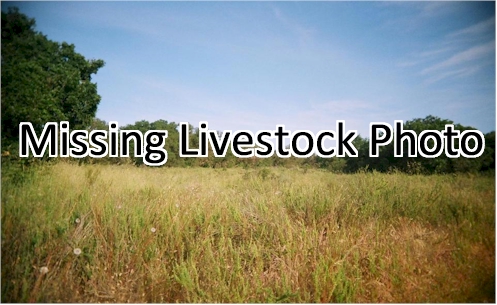 Tabapuã is a Brazilian breed of cattle. It is one of several breeds originating from cross-breeding of Zebu with European breeds. The Tabapuã was created in the 1940s by the Brazilian Agricultural Research Corporation (Embrapa) in the state of Goiás in central Brazil.
Tabapuã is a Brazilian breed of cattle. It is one of several breeds originating from cross-breeding of Zebu with European breeds. The Tabapuã was created in the 1940s by the Brazilian Agricultural Research Corporation (Embrapa) in the state of Goiás in central Brazil.
The breed is characterized by its large size and muscular build, with a well-defined neck and hump. Bulls can weigh up to 1,200 kg (2,600 lb) and cows up to 800 kg (1,800 lb). Tabapuã cattle are usually light red or yellow in color, with white spots or white underbellies. They are known for their calm and docile temperaments.
Tabapuã cattle are primarily used for meat production, but they can also be used for dairy production. Their meat is highly prized ...

 Tarentaise
Tarentaise
 Tarentaise cattle are from the rugged Savoie region of
France.
Tarentaise cattle are from the rugged Savoie region of
France. In the early 1970s, Dr. Ray Woodward of Miles City, Montana, was director of the beef program for American Breeders Service. Woodward was looking for a breed that would work on commercial cows in the U.S. while retaining milking ability and, most importantly, avoid the calving and fertility problems of the then known exotics. He found the answer with Tarentaise cattle.
The first Tarentaise bull calf arrived at a Canadian quarantine station in 1972. His name was Alpin, he weighed 1650 pounds at 30 months, and he generated so much excitement and semen sales that soon after the Canadian Tarentaise Association formed. In 1973, the American Tarentaise Ass ...

 Tasmanian Gray
Tasmanian Gray
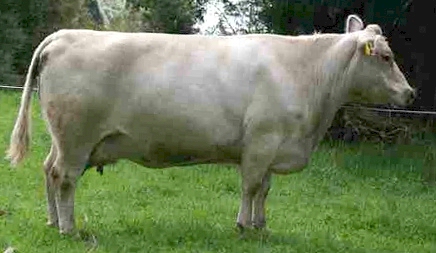 Tasmanian Gray Cattle, also known as "Tassie Grays", are a breed of cattle originating from Tasmania, Australia. They are a hardy breed, well adapted to the harsh and varied climates of the island state, and are known for their versatility and versatility in both meat and dairy production.
Tasmanian Gray Cattle, also known as "Tassie Grays", are a breed of cattle originating from Tasmania, Australia. They are a hardy breed, well adapted to the harsh and varied climates of the island state, and are known for their versatility and versatility in both meat and dairy production.
Tasmanian Grays have a distinctive silver-gray coat, with black points and a strong, muscular build. They are medium-sized cattle, with mature cows weighing between 600 and 800 kg and bulls weighing between 900 and 1000 kg. They have a docile temperament and are known for their easy handling and adaptability.
Tassie Grays are a high-performing breed, with excellent feed conversion and meat quality. They produce tender, flavorful beef ...

 Telemark
Telemark
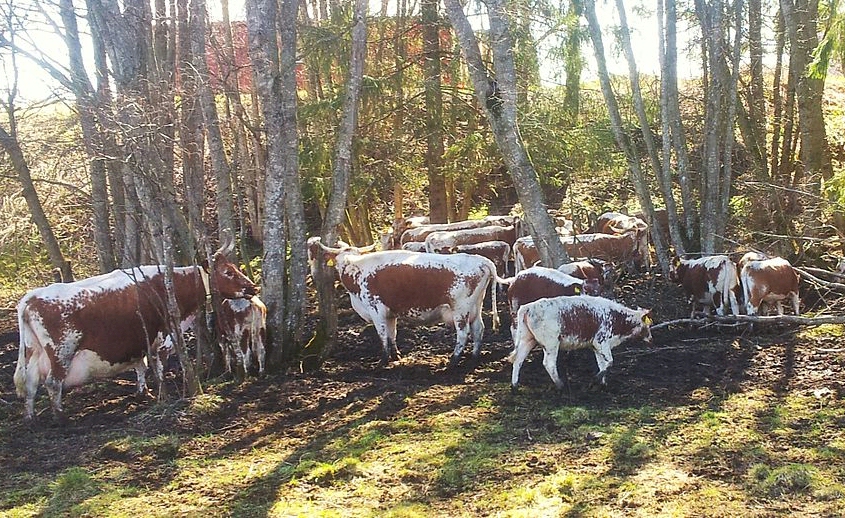 Telemark Cattle are a hardy and versatile breed of cattle originating from the Telemark region of Norway. They are a medium-sized breed, with mature cows weighing between 500 and 700 kg and bulls weighing between 800 and 1000 kg.
Telemark Cattle are a hardy and versatile breed of cattle originating from the Telemark region of Norway. They are a medium-sized breed, with mature cows weighing between 500 and 700 kg and bulls weighing between 800 and 1000 kg.
Telemark cattle have a distinctive appearance, with a light brown or yellowish-red coat and a white blaze on their forehead. They are known for their strong, muscular build and are well-suited to rough terrain and harsh climates.
Telemark cattle are well-suited to both meat and dairy production. They are known for their high levels of fertility and strong maternal instincts, making them excellent mothers and efficient producers of high-quality meat and milk. They are also well-known for their ...

 Terreña
Terreña
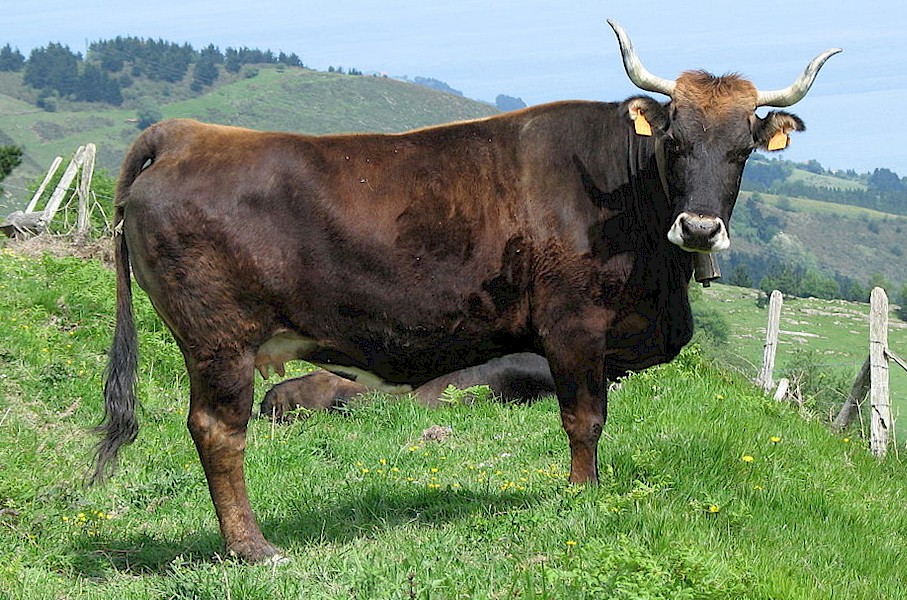 Terreña (Basque: Behi terreña) are an endangered breed of mountain cattle indigenous to the autonomous community of the Basque Country in northern Spain. It is distributed mostly in the provinces of Álava and Bizkaia, with some localized populations in Gipuzkoa.
Terreña (Basque: Behi terreña) are an endangered breed of mountain cattle indigenous to the autonomous community of the Basque Country in northern Spain. It is distributed mostly in the provinces of Álava and Bizkaia, with some localized populations in Gipuzkoa.The Terreña originates in the northern part of the province of Álava and the southern part of Bizkaia; some are found in the comarca of Enkarterri in Bizkaia, and there are some localized populations in Gipuzkoa. The Terreña was formerly found in large numbers, and was the most numerous breed in these areas; in the mid-twentieth century there were over 15,000 head. The industrialisation of agriculture and depopulation of rural areas in the latter part of that century led to ...

 Texon
Texon
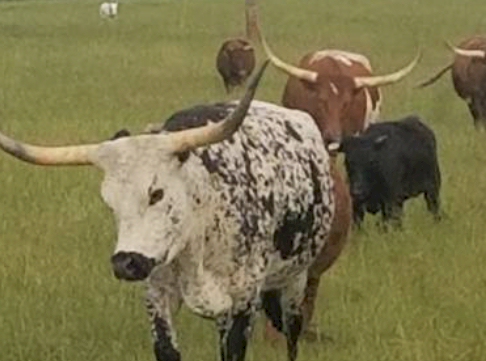 The Texon is a composite breed - a cross between the Texas Longhorn, and the Beef Devon. The Texas Longhorn is uniquely suited to its environment - the Beef Devon, first introduced to the United States in 1623, is "beef breed supreme on grass." The project undertaken at Leaning Cedar Ranch will advance the breed, ensuring "grass-fed" remains the pre-eminent ranching strategy for sustainable beef on grass pasture.
The Texon is a composite breed - a cross between the Texas Longhorn, and the Beef Devon. The Texas Longhorn is uniquely suited to its environment - the Beef Devon, first introduced to the United States in 1623, is "beef breed supreme on grass." The project undertaken at Leaning Cedar Ranch will advance the breed, ensuring "grass-fed" remains the pre-eminent ranching strategy for sustainable beef on grass pasture.
The Texas Longhorn is part of American lore and legend; originating with cattle first brought to the Western Hemisphere by European explorers in the 15th century. The Longhorn was almost extinct by the early part of the 20th century, but is now recognized as a “genetic treasure.” The Texas Longhorn is distinct for two ...

 Tharparkar
Tharparkar
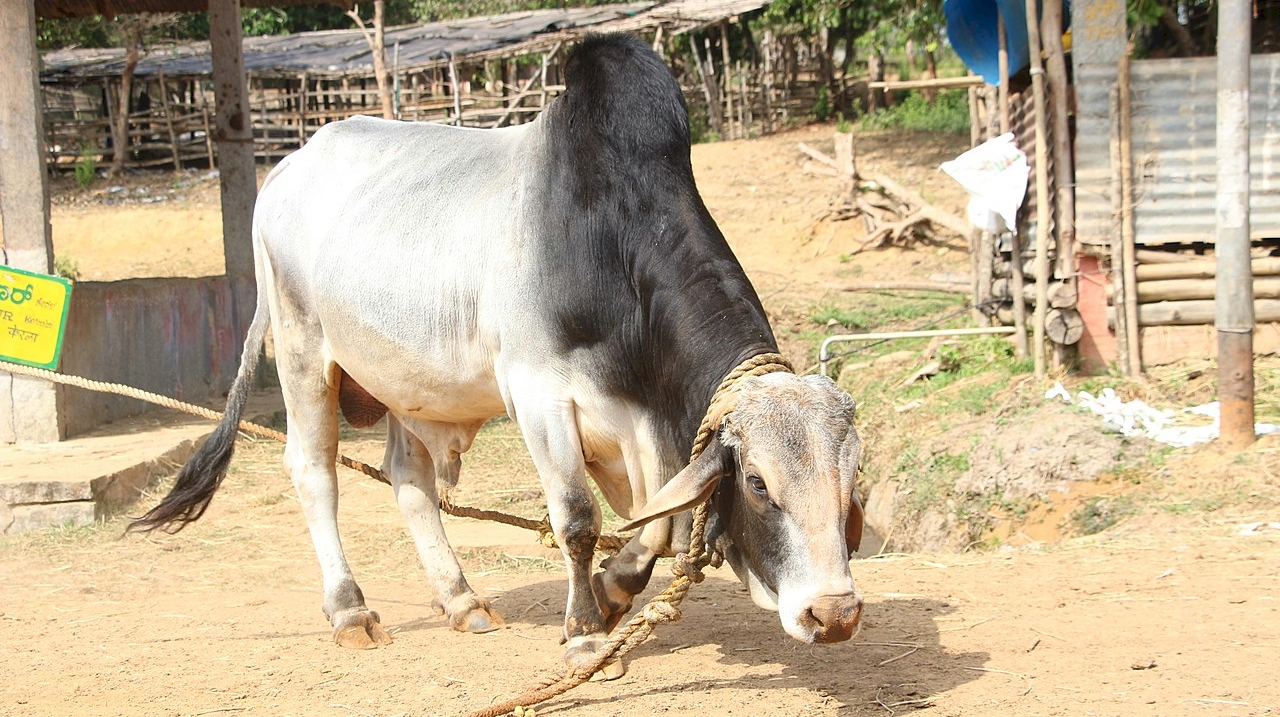 Tharparkar Cattle, also known as the Thari, are a breed of cattle originating from the Tharparkar district of Sindh, Pakistan. They are well adapted to the harsh, arid environment of the region and are known for their resilience and ability to thrive on limited feed resources.
Tharparkar Cattle, also known as the Thari, are a breed of cattle originating from the Tharparkar district of Sindh, Pakistan. They are well adapted to the harsh, arid environment of the region and are known for their resilience and ability to thrive on limited feed resources.
Tharparkar cattle are medium-sized, with mature cows weighing between 450 and 600 kg and bulls weighing between 600 and 800 kg. They have a distinctive appearance, with a white or light gray coat and a hump over the shoulder blade, which serves as a reserve of fat to help them survive in times of limited food availability.
Tharparkar cattle are valued for their high-quality meat and milk production. They are efficient converters of feed into meat ...

 Tswana
Tswana
 Tswana Cattle are a breed of cattle originating from the Tswana people of southern Africa, specifically in the countries of Botswana and South Africa. They are a medium-sized breed, with mature cows weighing between 400 and 600 kg and bulls weighing between 600 and 800 kg.
Tswana Cattle are a breed of cattle originating from the Tswana people of southern Africa, specifically in the countries of Botswana and South Africa. They are a medium-sized breed, with mature cows weighing between 400 and 600 kg and bulls weighing between 600 and 800 kg.Tswana cattle have a distinctive appearance, with a compact and muscular build and a red, brown, or yellow coat. They are known for their hardiness and ability to thrive in harsh, arid climates, making them well-suited to the environments of southern Africa.
Tswana cattle have a long and proud history among the Tswana people, where they have been prized for their hardiness and versatility for centuries. They have been carefully selected and bred over the ...

 Tudanca
Tudanca
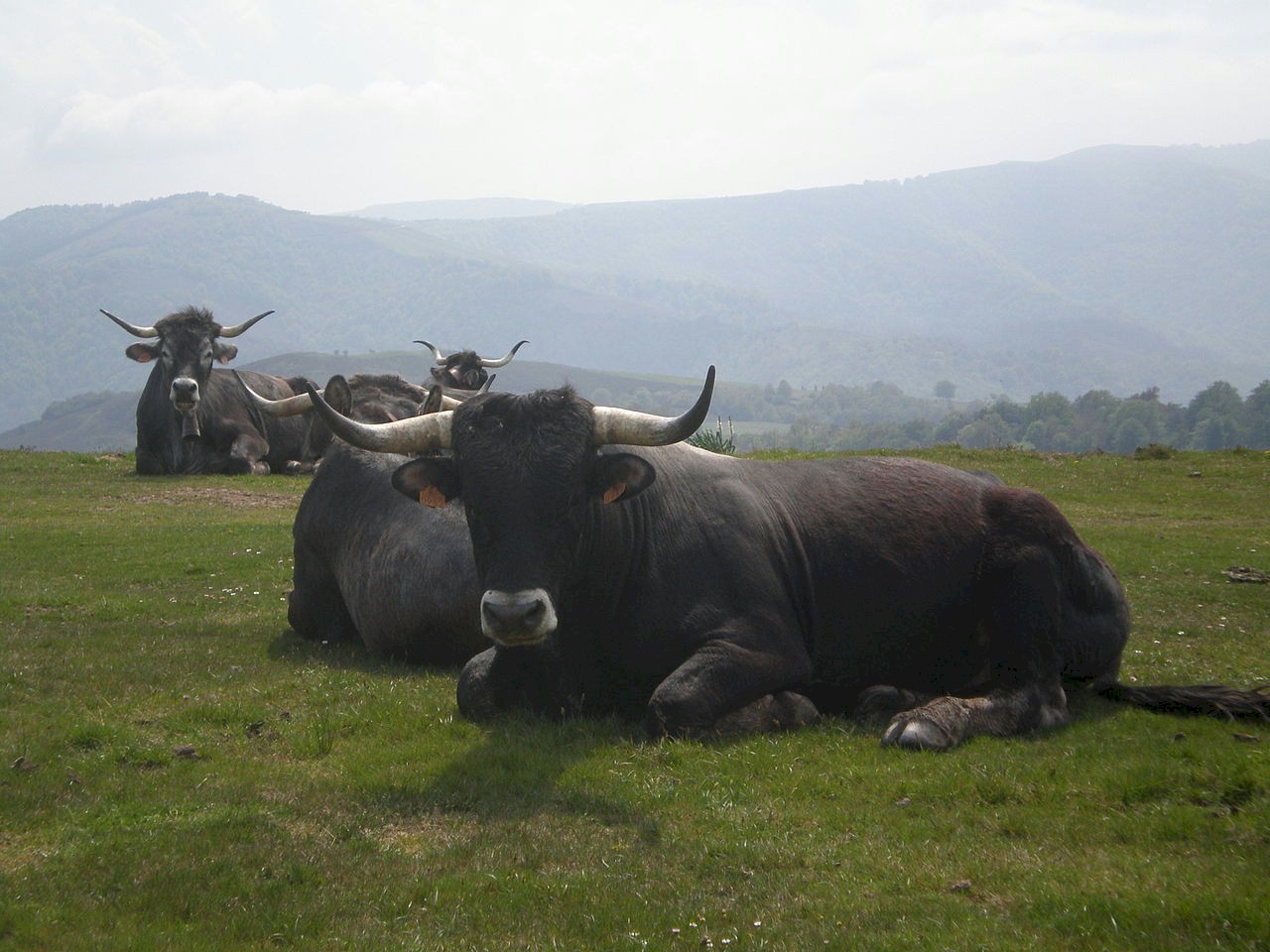 Tudanca are a traditional Spanish breed of cattle from Cantabria, in northern Spain. They get their names from the village of Tudanca in the Comarca de Saja-Nansa in western Cantabria. In the past they were bred as a draught breed, much used for transport of goods to and from the ports of the Cantabrian coast; but now they are raised for meat.
Tudanca are a traditional Spanish breed of cattle from Cantabria, in northern Spain. They get their names from the village of Tudanca in the Comarca de Saja-Nansa in western Cantabria. In the past they were bred as a draught breed, much used for transport of goods to and from the ports of the Cantabrian coast; but now they are raised for meat.
Tudanca is a middle-sized cattle breed, with cows reaching 135 cm shoulder height and a weight of 320 kg, bulls reaching 150 cm and 420 kg. The color of Tudanca goes from grayish to black, cows are lighter than bulls on average. Like the aurochs, Tudanca bulls have a light stripe on their back. Additionally, they often have a light saddle. Typically for Tudanca is the swung back line, which ...

 Tuli
Tuli
 Tuli cattle are a medium-sized, pure African Sanga breed. Sanga
have descended from cattle that have been in Africa for over 5000 years.
Tuli cattle are a medium-sized, pure African Sanga breed. Sanga
have descended from cattle that have been in Africa for over 5000 years.
Tuli were brought to Zimbabwe by the migrating Nomadic African tribes from East Africa. Over the years these cattle became extremely docile with culling of shy and poor breeders and those cattle that showed poor temperament.
The Tuli are naturally polled cattle that have three basic coat colors - red, yellow and white and variations of these colors. High fertility, early maturity, hardiness, adaptability, ease of calving, good mothering ability and excellent carcass quality, coupled with a docile nature have made the Tuli extremely popular in straight and cross-breed ...

 Tulim
Tulim
 Tulim Cattle are a breed of cattle originating from the Tulim region of Russia. They are a hardy breed, well-suited to harsh climates and rugged terrain. Tulim cattle are medium-sized, with mature cows weighing between 500 and 700 kg and bulls weighing between 800 and 1000 kg.
Tulim Cattle are a breed of cattle originating from the Tulim region of Russia. They are a hardy breed, well-suited to harsh climates and rugged terrain. Tulim cattle are medium-sized, with mature cows weighing between 500 and 700 kg and bulls weighing between 800 and 1000 kg.
Tulim cattle have a distinctive appearance, with a dark red or brown coat and a muscular build. They are known for their strength and endurance, and are prized for their ability to thrive in harsh climates and challenging environments.
Tulim cattle are well-suited to both meat and dairy production. They are known for their high levels of fertility and strong maternal instincts, making them efficient producers of both high-quality meat and rich, c ...

 Turkish Grey Steppe
Turkish Grey Steppe
 Turkish Grey Steppe Cattle are a breed of cattle originating from the steppes of Turkey. They are a hardy breed, well-suited to harsh climates and rugged terrain. Turkish Grey Steppe cattle are medium to large-sized, with mature cows weighing between 600 and 800 kg and bulls weighing between 800 and 1000 kg.
Turkish Grey Steppe Cattle are a breed of cattle originating from the steppes of Turkey. They are a hardy breed, well-suited to harsh climates and rugged terrain. Turkish Grey Steppe cattle are medium to large-sized, with mature cows weighing between 600 and 800 kg and bulls weighing between 800 and 1000 kg.
Turkish Grey Steppe cattle have a distinctive appearance, with a grey coat and a muscular build. They are known for their strength and endurance, and are prized for their ability to thrive in harsh climates and challenging environments.
Turkish Grey Steppe cattle are well-suited to both meat and dairy production. They are known for their high levels of fertility and strong maternal instincts, making them efficient ...

 Tux
Tux
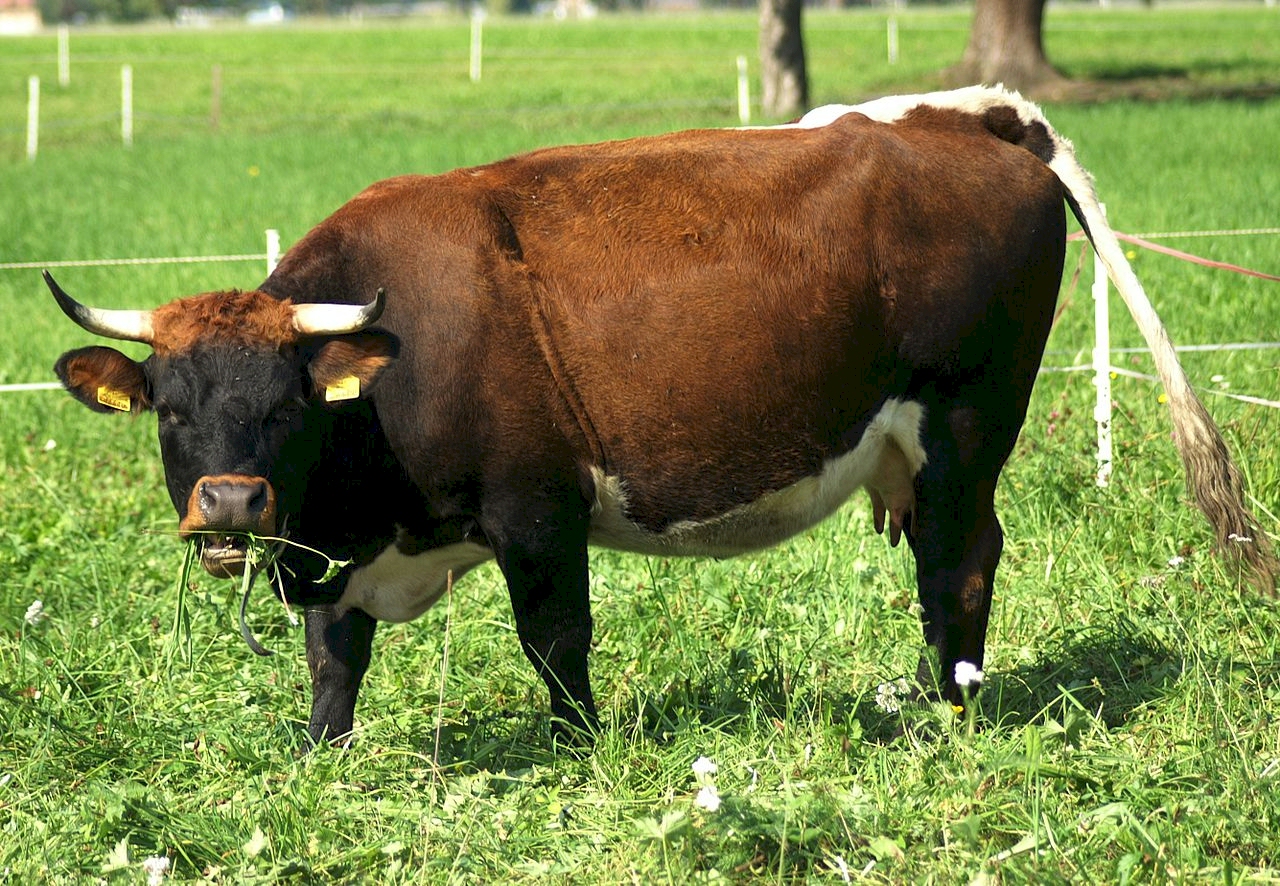 Tux Cattle (also known as Tux-Zillertal or Tux-Zillertaler) are an endangered Austrian breed of domestic cattle. They were developed in 1982 with two similar Alpine breeds: the Tux and the Zillertal.
Tux Cattle (also known as Tux-Zillertal or Tux-Zillertaler) are an endangered Austrian breed of domestic cattle. They were developed in 1982 with two similar Alpine breeds: the Tux and the Zillertal.
The Tux breed was formerly common in Tyrol and in other parts of Austria. Today it is kept mainly in the Zillertal. In 1930 there were some 4500 head. By 1970 the number had fallen to 30, and systematic conservation efforts were begun. A study in 2002 found a total population of 471 head.? In 2014 a population of 1117–2500 was reported.
They are of medium size, powerfully built with a strong neck and strong black-tipped horns. The coat is black or red, with white markings on the pelvis, the root of the tail, the underbe ...

 Tyrol Grey
Tyrol Grey
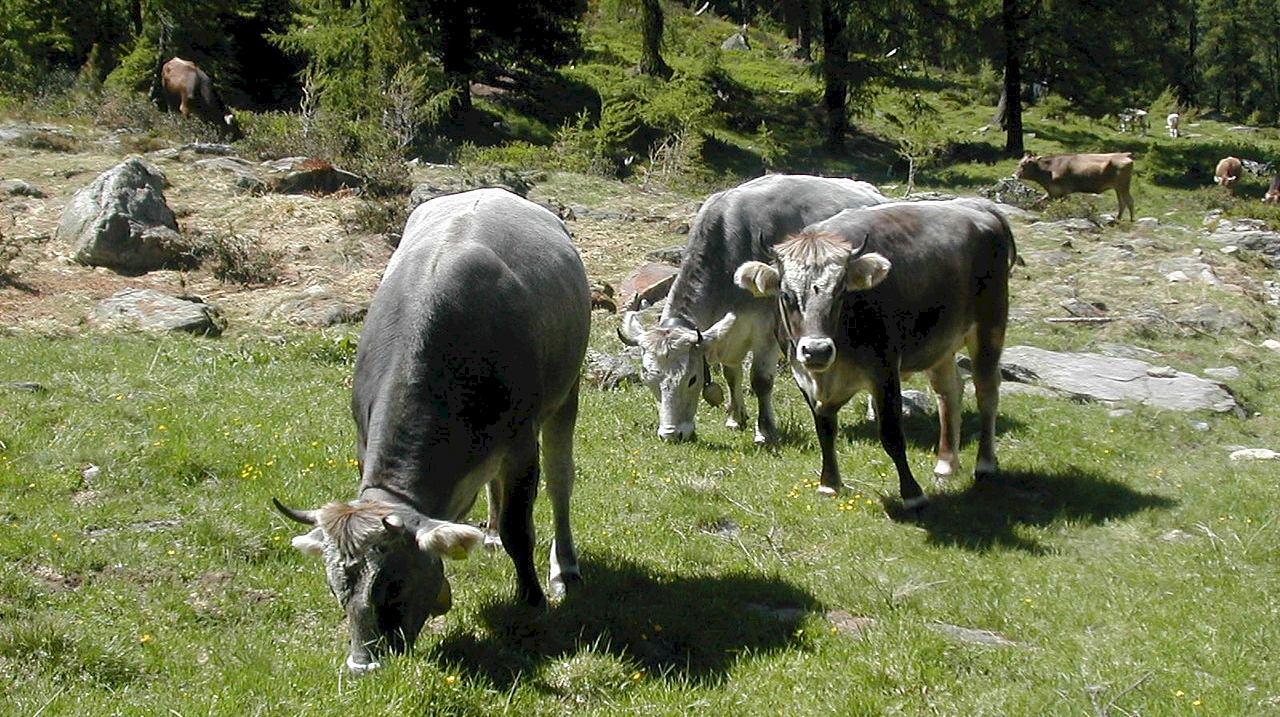 The Tyrol Grey or Tyrolean Grey (German: Tiroler Grauvieh, Italian: Grigio Alpina) is a typical alpine cattle breed from Tyrol in Austria and South Tyrol in Italy. It is a dual purpose breed with a very good milk and beef performance. The females grow up to their full size within three years and reach a weight of 550 – 600 kg. They have a correct fundament and hard claws.
The Tyrol Grey or Tyrolean Grey (German: Tiroler Grauvieh, Italian: Grigio Alpina) is a typical alpine cattle breed from Tyrol in Austria and South Tyrol in Italy. It is a dual purpose breed with a very good milk and beef performance. The females grow up to their full size within three years and reach a weight of 550 – 600 kg. They have a correct fundament and hard claws.
The Tyrol Greys have a good forage instinct and feed conversion. They are also robust, long living, and very fertile.
The milk has an excellent quality and is adequate either for the direct consumption or for the processing of high-quality products (cheese, butter, yogurt). Among the mountain cattle breeds in Italy the Tyrol Grey has the best milk amo ...
